Introduction: No need to hit the gym or sports science laboratory to measure your fitness level. With minimal equipment and space, you can perform easy-to-do fitness tests at home to gauge your overall fitness level. In this blog post, we’ll show you five fitness tests to measure your explosiveness, flexibility, proprioception, agility, and body composition. These tests will help you establish a baseline for your fitness level and track your progress as you train.
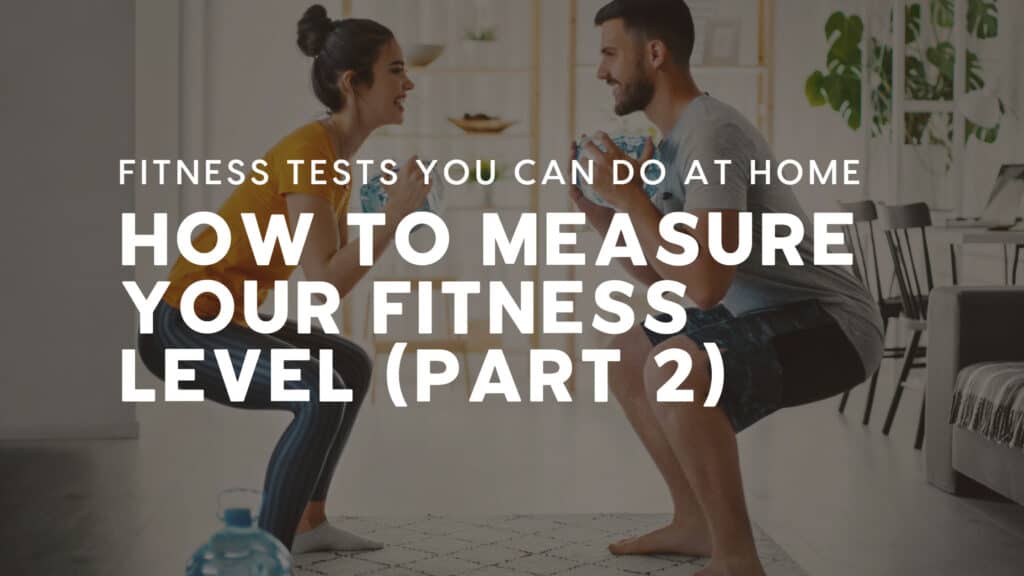
Most fitness tests used in sports science require expensive laboratory equipment or training.
However, there are some tests you can simply perform at home with minimal equipment and still get reliable data.
We’ve done the hustle for you and made a list with easy-to-do fitness tests for each one of the 8 + 1 physical abilities.
You can use them to gauge your general fitness quickly and as a benchmark for future testing.
After taking these tests, you may wish to train for a few months. Then, take the tests again and compare the results.
In this second part of the article, we’ll see how to assess your explosiveness, flexibility, proprioception, agility, and body composition.
Let’s see them one by one!
1. Power: Wall Jump Test
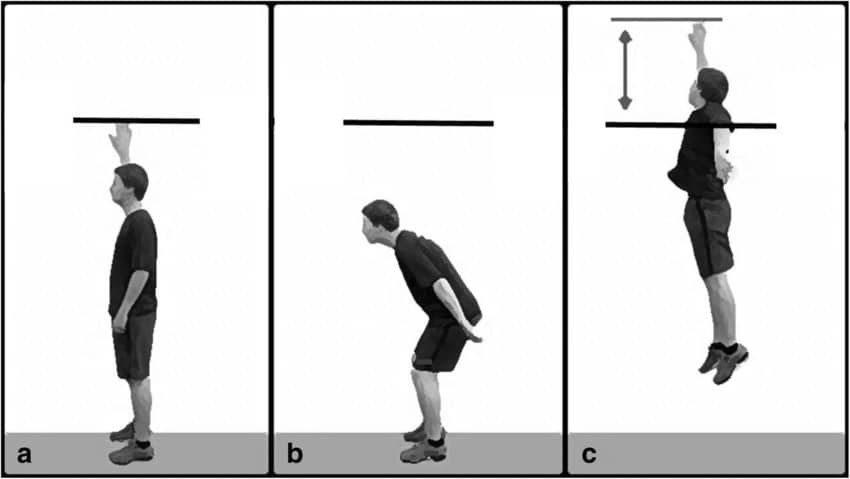
This test is designed to measure your explosive leg power.
Equipment: All you need is a high wall, such as the outside of a building, and a bit of room so you can jump and land safely.
– Start by standing side onto a wall and reach up as high as you can with the hand closest to the wall.
– Make a note of how high you can reach. This is called the standing reach height.
-Then stand a little away from the wall, and jump high as possible using both arms and legs to assist in projecting the body upwards.
– Attempt to touch the wall at the highest point of the jump. Make a note of where you touched the wall at the height of the jump. Measure the distance between the standing reach height and the maximum jump height; that is your result.
– You can assist in recording your score by holding a piece of chalk in your hand and using it to mark the wall. If the wall already has horizontal lines, such as a brick wall, it will be easier to mark your jump height.
– Have as many attempts as you need to get the best possible score. Practice your technique, as the jump height can be affected by how much you bend your knees before jumping and the effective use of your arms.
– Compare your results to the table below. Remember, these scores are based on doing the tests as described and may not be accurate if the test is modified at all. Don’t worry too much about how you rate – just try and improve your own score.
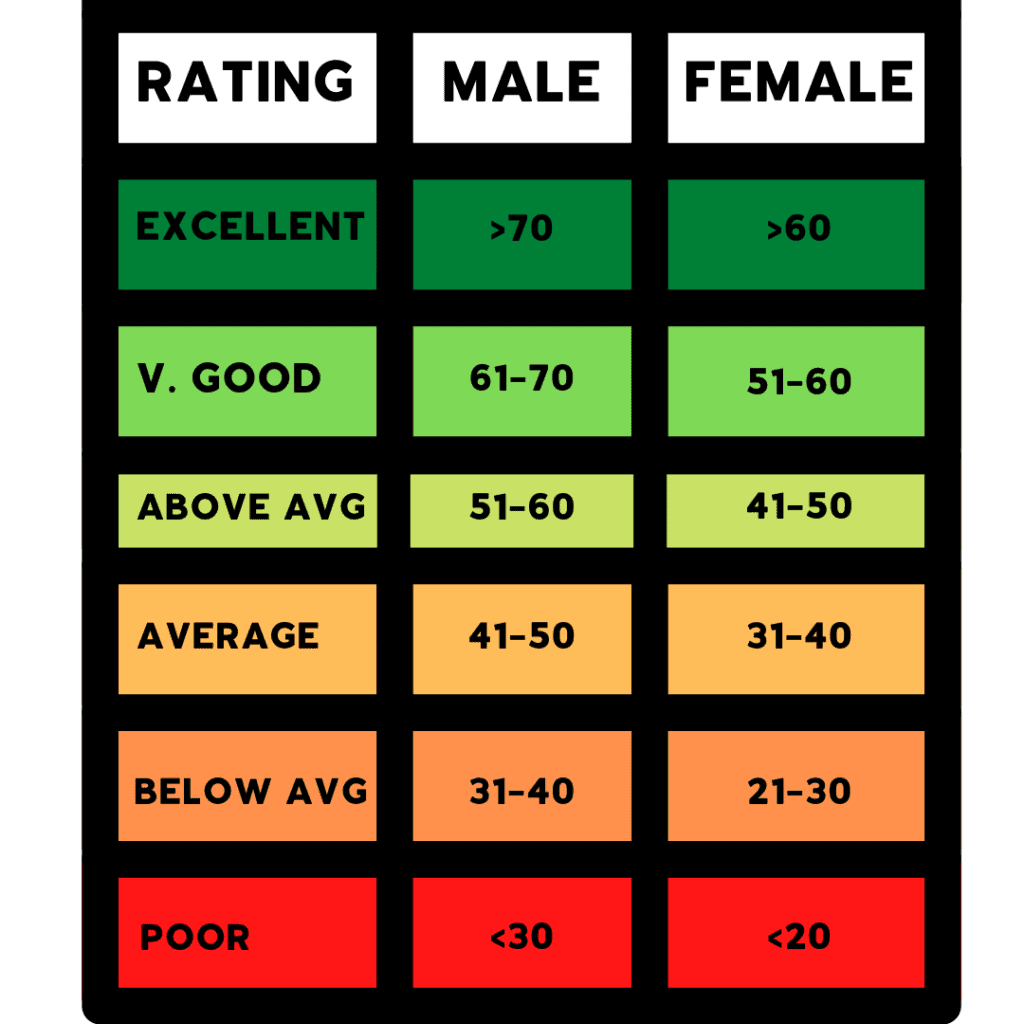
2. Flexibility: SIT and Reach Flexibility Test
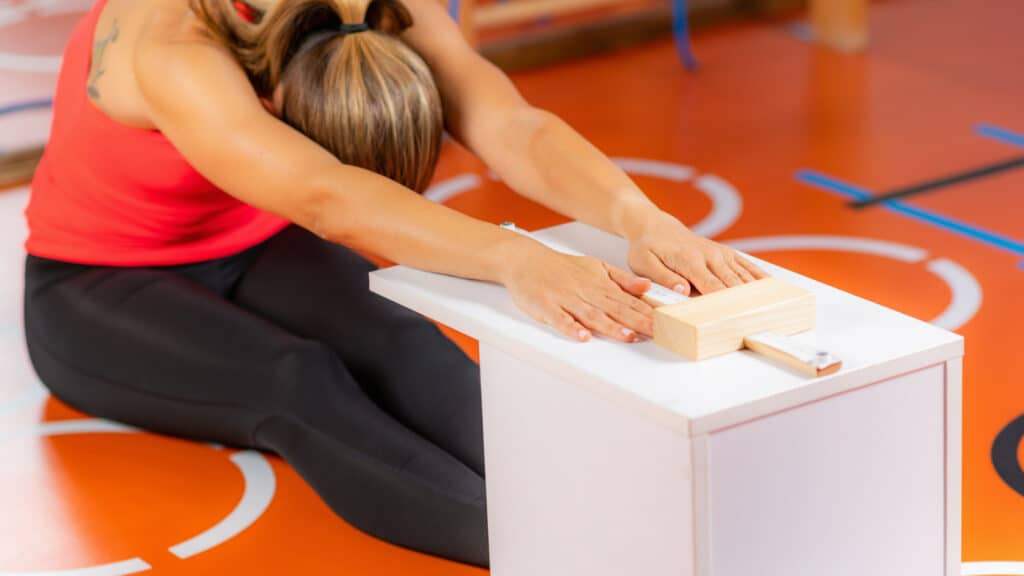
Equipment required: ruler can be used, and a step or box.
This test aims to measure the flexibility of the lower back and hamstring muscles (the back of your legs).
– Sit on the floor with legs stretched out straight ahead. Shoes should be removed.
– The soles of your feet should be placed flat against the box. Both knees should be locked and pressed flat to the floor.
– Ensure that your hands remain at the same level, not one reaching further forward than the other.
– Hold that position for at least one-two second and record the distance.
– Your score is the distance reached by your hand from the level of your feet, which is the zero mark.
– Compare your results with the table that follows.
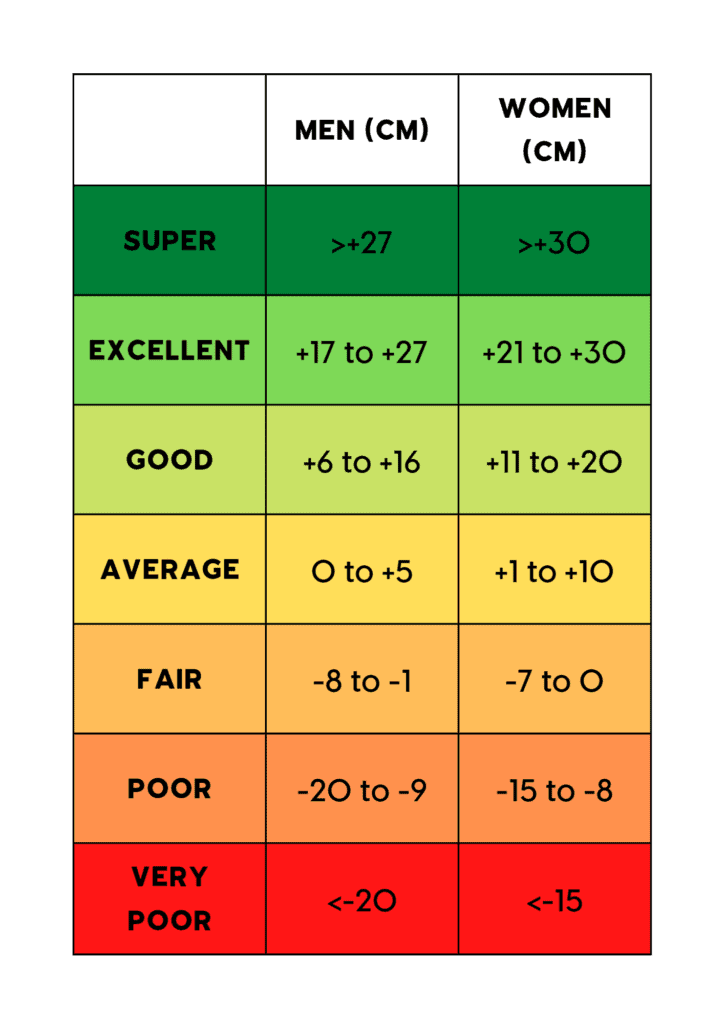
3. Proprioception: Standing Balance Test
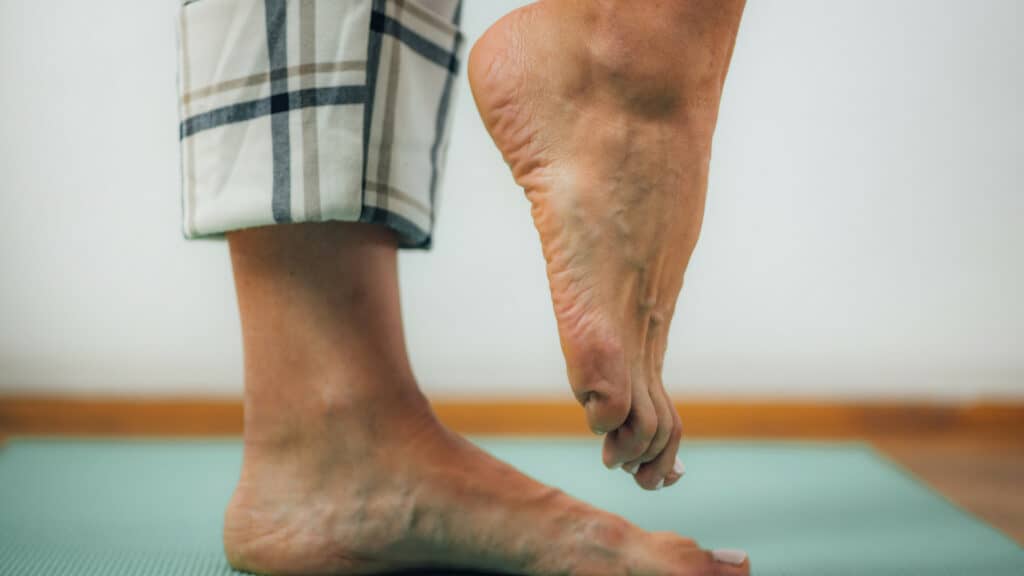
Equipment required: flat, non-slip surface, stopwatch, recording sheet.
The test aims to stand on one leg for as long as possible.
Instructions (you can also watch this video):
– Practice for a minute your balancing before starting the test.
– When ready, lift one foot off the ground, and the timing starts.
– The timing stops when the elevated foot touches the ground or you hop or lose your balance.
– Record your best of three attempts. Repeat the test on the opposite leg.
– To increase difficulty, the test can be conducted with your eyes closed.
– You don’t have to compare your score with normative data for this assessment. Just keep track of your progress in the long term.
– The minimum time you should be able to stand is 30 seconds.
4. Agility: 30-Second Endurance Jump
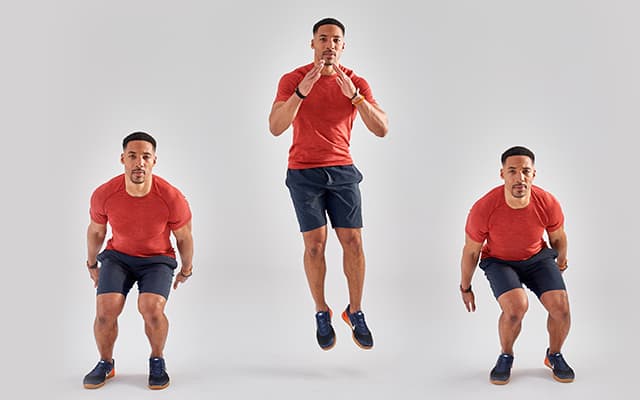
The 30-Second Endurance Jump is a test of lower body strength and agility.
The goal is to jump across a hurdle as many times as possible in 30 seconds.
Equipment required: a stopwatch and a 12″ high hurdle (or 30-33 cm)
Instructions (you can also watch this video):
– Stand comfortably with both feet flat on the ground, perpendicular to the hurdle.
– The timing starts from the first movement.
– Jump off both feet and land on both feet on the other side of the hurdle, then back again.
– The test continues for 30 seconds.
– Record the total number of completed jumps.
– You don’t have to compare your score with normative data for this assessment. Just keep track of your progress in the long term
Tip: As a hurdle, you can place 3-4 large bottles of water in a line on the ground.
4. Body Composition: Waist to Hip Ratio
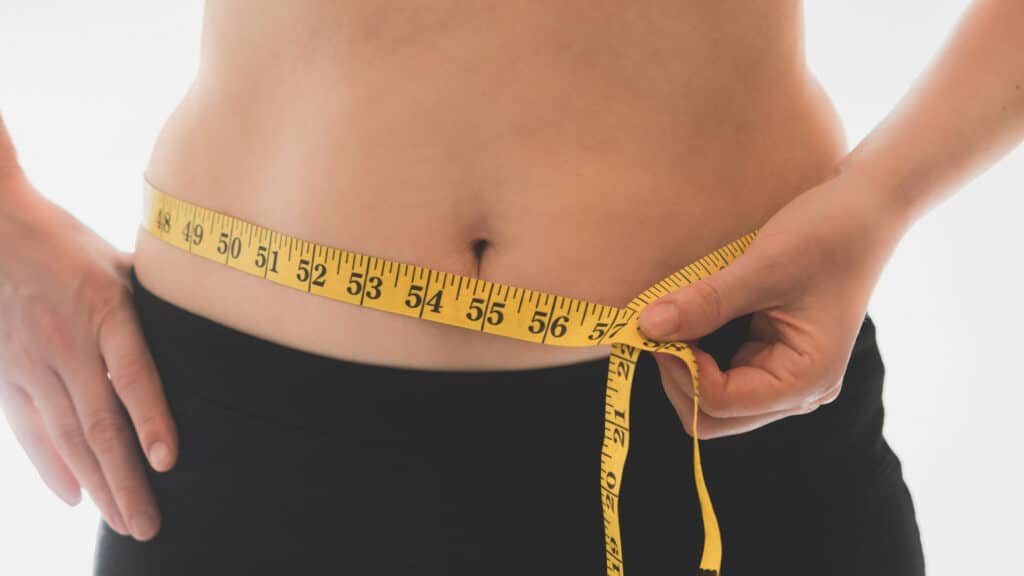
This test has been shown to be related to the risk of coronary heart disease.
The basis of this measure as a coronary disease risk factor is the assumption that fat stored around the waist poses a greater risk to health than fat stored elsewhere in the body.
Equipment required: tape measure
Instructions (you can also watch this video):
1. Measure your hips’ girth.
– Locate the bony process (the sticky out bit) at the top of the hip bone
– Place a tape measure across the bone of both hips.
– Ensure the tape is parallel to the floor all the way around you.
– Write down your hips’ girth measurement.
2. Then measure your waist’s girth.
– Locate and place a tape measure on your belly button.
– Take the tape measure around the back
– Ensure the tape is parallel to the floor all the way around you.
– Write down your waist’s girth measurement
3. Divide your waist girth by your hip girth.
4. Compare your score with these normative data:
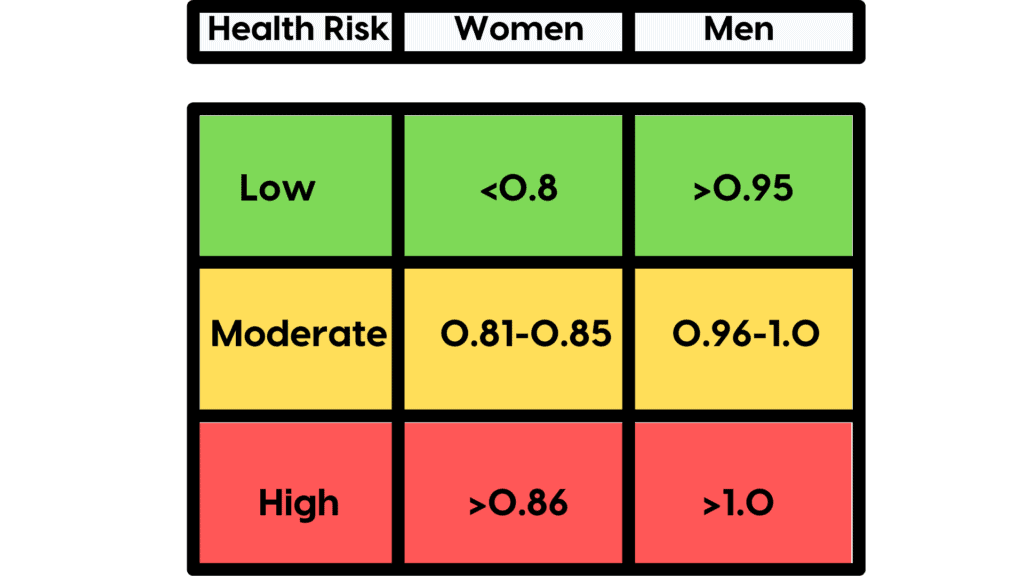
Conclusion
Measuring your fitness level at home doesn’t have to be complicated. By following these simple tests, you can assess your fitness level and track your progress over time. Remember, these tests are just a starting point, and you can always modify them or add more tests to your routine to keep challenging yourself. So, what are you waiting for? Get started and take control of your fitness journey today!
If you want a tailor-made fitness plan that will save you time and get you in shape faster, let us know, and we’ll get it done.
We know it’s hard to get in shape when you have a busy life. At Physical, we design a plan that works around your schedule so you can stay healthy and get your dream body faster.
Click the Subscribe Button below and meet your coach.
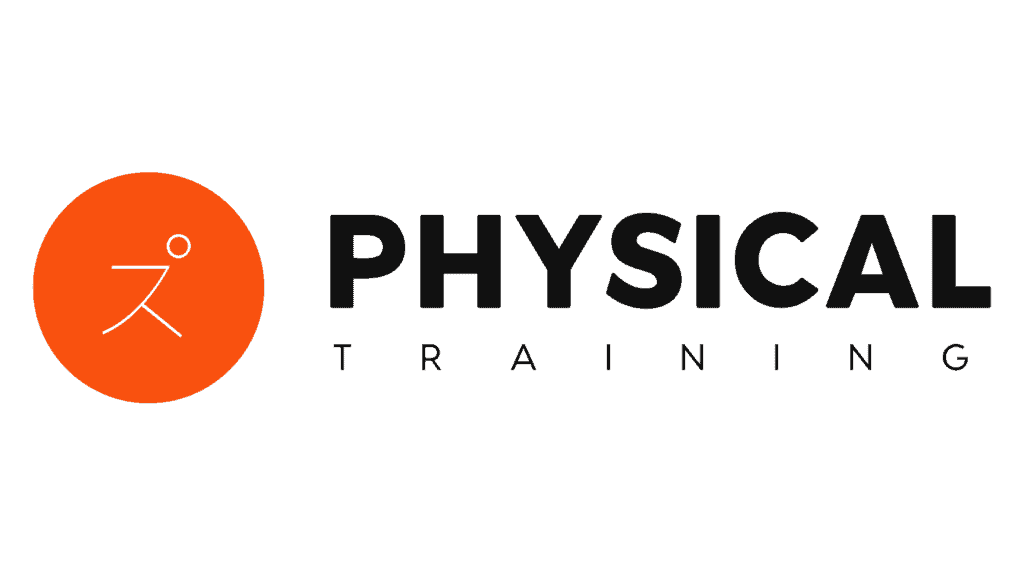
FAQs:
Q: Can I modify the tests?
A: The scores are based on doing the tests as described and may not be accurate if the tests are modified.
Q: What if I don’t rate well?
A: Don’t worry too much about how you rate – just try and improve your own score.
Q: Can I conduct the Standing Balance Test with my eyes closed?
A: Yes, to increase the degree of difficulty, the test can be conducted with your eyes closed.
Q: Why is it important to measure my fitness level?
A: Measuring your fitness level can help you track your progress and set goals to improve your overall fitness.
Q: Can I perform these tests even if I am not a fitness enthusiast?
A: Absolutely! These tests are designed to be simple and easy to perform at home, regardless of your fitness level.
Q: Do I need any expensive equipment to perform these tests?
A: No, you don’t need any expensive equipment. Most of these tests can be performed with minimal equipment, such as a wall, ruler, or tape measure.
